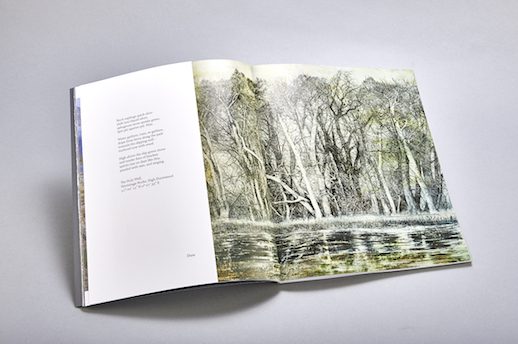Taken from Springlines: Exploring hidden and mysterious bodies of water, by Mary Anne Aytoun-Ellis and Clare Best (Little Toller Books, out now).
Words: Alexandra Harris
I spent most of my teenage years in a house called Lakeside, which was, in fact, beside a lake. Not that it was our lake: it was owned by the people next door and we looked at it over a fence. But the fence was low and the lake was large, and the grass at the bottom of our garden was bright lush green and springy with its closeness to the water. Ducks dozed watchfully on the bank, where hogweed grew high in the shade of willows. Canada geese flew in nightly through the summer, their low honking audible further away than thunder. Running out to see their formation against a flushed evening sky, I found them thrilling. My father, on the other hand, considered all possible deterrents and prepared to hose the patio in the morning when the geese had feasted on the lawn.
I liked seeing the lake on the Ordnance Survey map because there it was called a ‘Fish Pond’. This was diminishing, on the face of it, but where ‘lake’ sounded ornamental, ‘Fish Pond’ suggested purpose. The road was called Monkmead Lane, and though I could find no sign of monastic history in the local library, I was keen to attribute the fishing to monks. Semi-rural suburbia fell away in a vision of busy friars, who piped water up past their beehives to their acres of sprouting kitchen garden.
When I saw the monks, though, I also saw indistinct figures – two or three of them – walking firmly in a straight line over the water. This too came from the map, for on the map there was an oblique line just grazing the edge of the lake: a fine, dotted line which continued a long way on either side and at intervals read ‘ROMAN ROAD (course of)’. It extended from the site of the Roman bath house at Wiggonholt, where parts of a hot pool and a cold pool now lie beneath nettles and ragwort at the roadside. The figures in my mind were always walking away from the baths, across the lake they never knew, and south to the Downs.
I doubt there were many Roman relics down in the silt under the water, nor monastic gardening tools for that matter. But there was, I heard, a Canadian tank down there. There had been an army base in the woods (the concrete roads were still there under the pine trees), and at the end of the war a defunct tank was rolled into the water.
So there’s rusted iron in the depths, lethally sharp in its corroded state, and a gun pointing into liquid darkness. There are fish, and perhaps an ironstone or two from the roman road. And – if life’s going on there as it did ten years ago – a grebe reappearing from underwater and sailing calmly on, the fine steel upright of a heron, geese calling through the night. And on the surface of the water there would be, this evening, an absolute stillness that dimples at some passing windblown raindrop and resumes its mercury quiet.
*
Springlines is available in the Caught by the River shop, priced £20. Buy a copy here.
